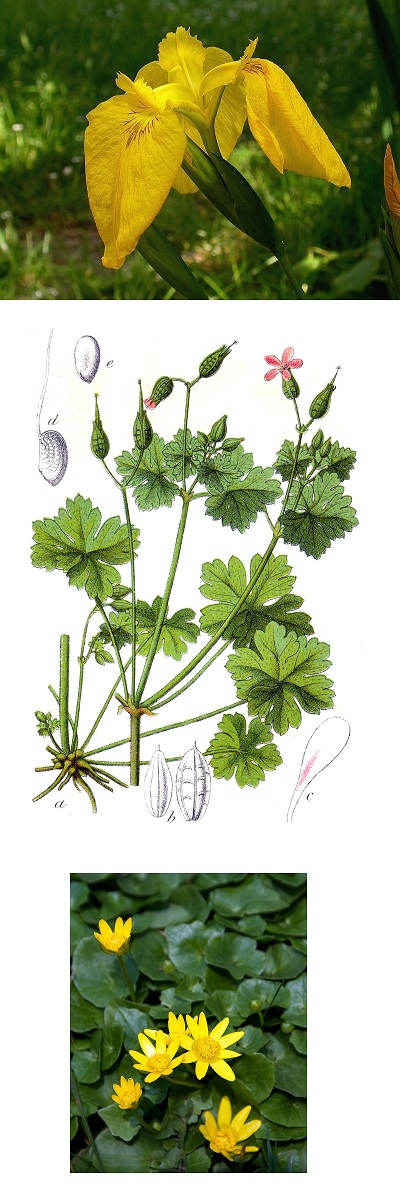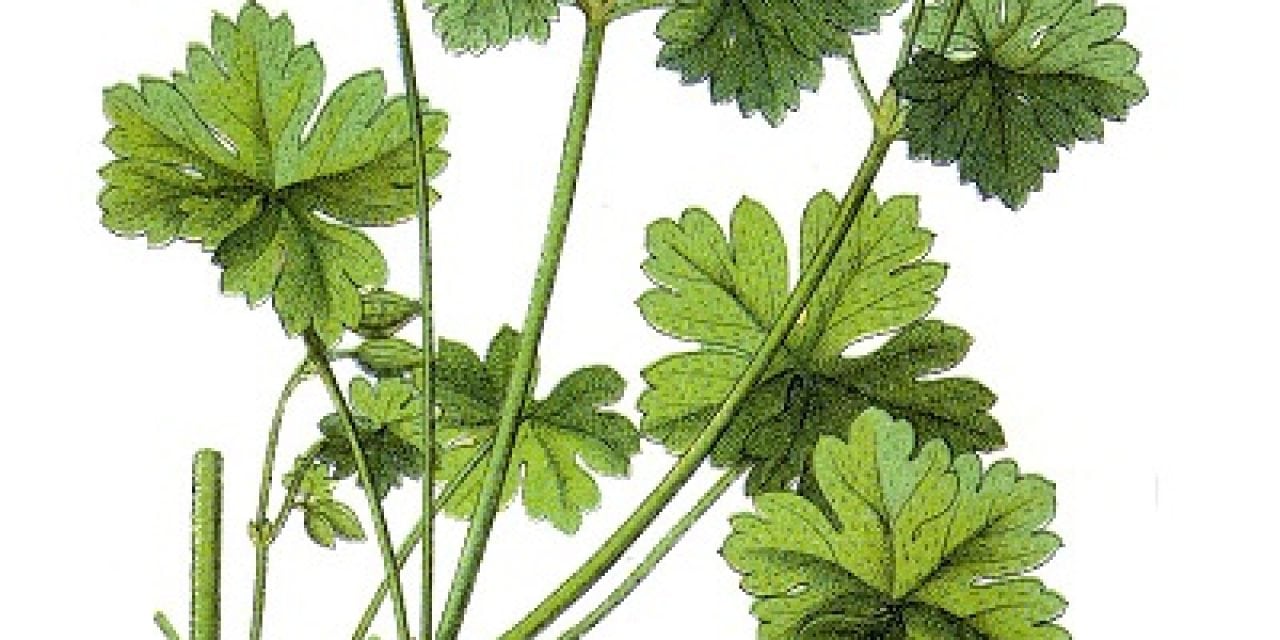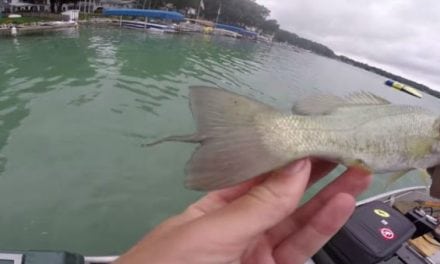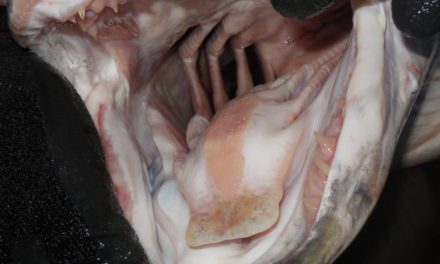 Maryland is stepping up the fight against ecosystem-altering nonnative plants by banning the sale of three aggressively spreading ornamentals and requiring that warnings be posted next to retail displays of five others sold in garden stores and nurseries.
Maryland is stepping up the fight against ecosystem-altering nonnative plants by banning the sale of three aggressively spreading ornamentals and requiring that warnings be posted next to retail displays of five others sold in garden stores and nurseries.
The sales bans for shining cranesbill, yellow flag iris and fig buttercup don’t take effect until next year, but warnings for the other species will be required starting July 12. The Maryland Department of Agriculture mandates are the agency’s first restrictions on the sale of ornamental plants.
The MDA action, long sought by people battling nonnative invasive terrestrial plants, was hailed by some as a dramatic first step amid a wave of vegetative change is overtaking many urban, suburban and even rural areas. Hundreds of volunteers and state and local government staff have been trying to stop the spread of invasive plants by pulling them out of the ground and replacing them with native plants, only to see the invasives roar back.
“This is unprecedented in Maryland, and a very uncommon step for any state to take,” said Carol Bergmann, a forest biologist with the Maryland-National Capital Parks and Planning Commission (M-NCPPC), the parks agency shared by Montgomery and Prince George’s counties. She predicted that other invasive plants will be subject to sales restrictions over time.
The MDA action was recommended by the Maryland Invasive Plant Advisory Committee, a panel established by state law in 2011, when lawmakers directed the MDA to regulate invasive plants harming non-agricultural areas.
But the MDA rule is too little, too late, said Laurie Taylor-Mitchell, the lead “weed warrior” in Baltimore County’s Cromwell Valley Park.
Taylor-Mitchell said one of the plants to be banned, fig buttercup, also known as lesser celandine, already blankets 12 acres of the park. Like many other invasives there, she said, it has overwhelmed and replaced native plants and comes back even if pulled out. Making matters worse, she added, deer will eat any native plants that appear, but not lesser celandine.
“This a terrible problem,” Taylor-Mitchell said. “The house has been on fire for years—and now they’re deciding to ban sales of the plant?”
Fig buttercup is classified as invasive in 19 states, including every state in the Bay watershed, according to the U.S. Forest Service. At least two states, Wisconsin and New York, already prohibit sale of the plant.
Many thousands of non-native trees and plants have been introduced to the United States since the colonial era. According to 1998 federal study, 1,400 of them are invasive, meaning they spread on their own beyond the places where they were planted, some very aggressively
Hundreds of invasive aquatic plants, groundcover plants, bushes, vines and trees have been unwittingly imported to beautify building interiors and outdoor areas in the Bay watershed, most since the Victorian era. Many can still be purchased in garden centers or on the internet. They spread by various means, including the outdoor disposal of potted plants. Sometimes they’re transported over long distances when birds consume the berries, fly off and later defecate the undigested seeds.
Banning the sale of plants already well-established will have limited impact on already infested areas, Bergmann said, but it can help reduce new invasions.
The MDA rule will be phased in over the next nine months, with bans on three plants taking effect April 11, 2017.
But beginning this month, retailers must post caution signs adjacent to five other invasive ornamental plants: burning bush, border privet and three invasive vines that are nonnative members of the wisteria family — Chinese wisteria and Japanese wisteria and an Asian wisteria hybrid.
The cautions urge customers to consider purchasing native alternatives instead. Any retailer that does not post the signs as stipulated will be subject to an MDA “stop sale” order, said Kim Rice, the MDA’s program manager for plant protection and weed management.
Nurseries and garden centers will not have to post any notices next to the three plants to be banned in 2017. Rice said the law passed in 2011 does not give the MDA authority to require that. Rice said the MDA will urge nurseries and garden centers to voluntarily post the warnings adjacent to the three plants on the ban listthese plants.
Rice said that the MDA will gradually regulate the sale of more invasive plants.
Some nurseries are going further on their own. Johnson’s Florist & Garden Centers, based in Olney, MD, is phasing out other invasive plants, including the very popular but highly invasive bush, Japanese barberry. It has also restricted sales of English ivy to indoor house plants. Asked why the store took the action, a manager said it was only a matter of time before the MDA extended its restrictions to other plants.
Behnkes Nursery in Beltsville, MD, stopped selling at least nine invasive plants over the last 20 years, said Larry Hurley, a former perennial plant buyer at Behnkes and now part of the company’s management team.
The invasive plants and trees no longer sold at Behnkes include purple loosestrife, burning bush, Asian wisterias, dwarf periwinkle,
porcelain berry, akebia, Bradford pear and Japanese blood grass, Hurley said. English ivy sales are restricted to house plants.
The national Home Depot retail chain sells many of the plants that will be subject to the MDA restrictions. Spokeswoman Kathryn Emory said Home Depot growers follow all agricultural directions and regulations in any given state.
Home Depot also sells many of its plants online, including some plants subject to the restrictions. MDA spokesman Jason Schellhardt said the state is “not taking any specific actions regarding online retailers.”
The MDA’s restrictions on ornamental plants are the first in the three states sharing the vast majority of the Bay watershed. The agriculture agencies in Pennsylvania and Virginia have no such restrictions.
Meanwhile, the headwater state of New York bans the sale of 69 ornamental plants, bushes and trees, and requires warning signs on six others.
New York’s ban, established in 2014, applies to all three plants that on the MDA’s sales ban list as well as four on the MDA’s warning list. Like Maryland, New York only requires warning signs for burning bush.
One MDA staff member suggested that at least one of the plants on New York’s list of banned plants will prove to be hard keep out of customers’ hands.
Bob Trumbule, an MDA entomologist and facilitator of the independent Maryland Invasive Species Council, said New York’s ban on sales the Japanese barberry bush, will be difficult to enforce.
The post Maryland bans sale of 3 ornamental invasive plants, more to come appeared first on .
















